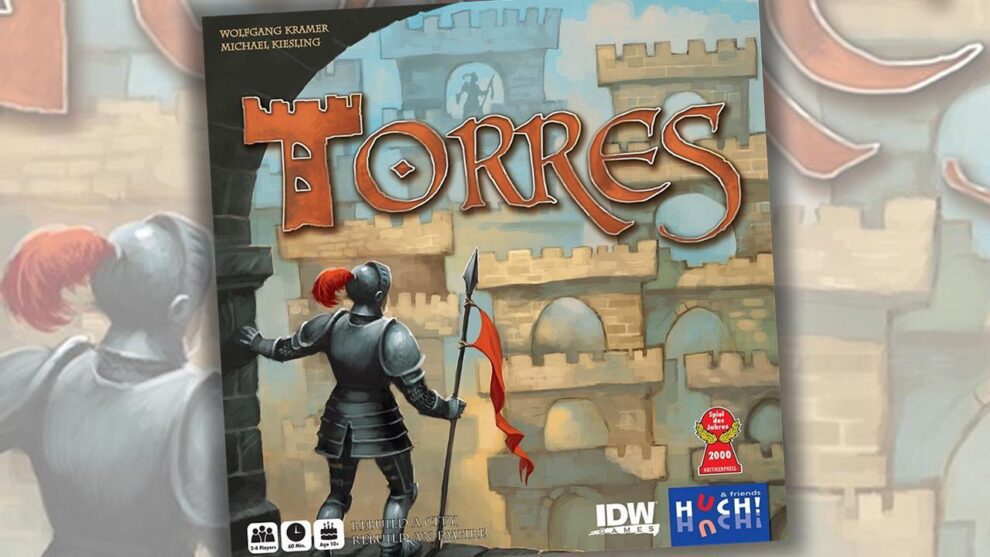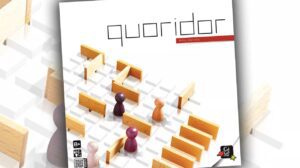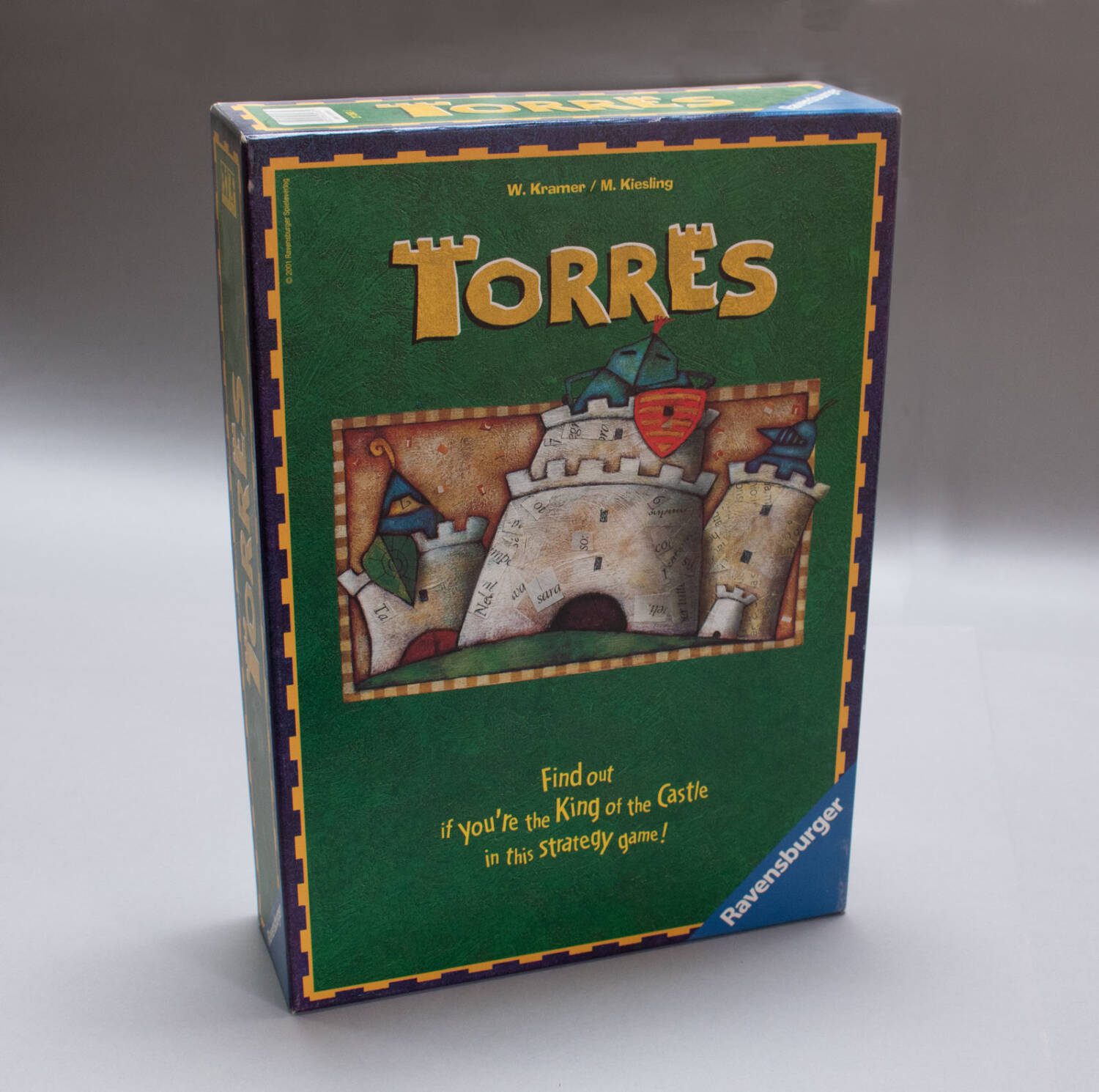
Torres was designed by Michael Kiesling and Wolfgang Kramer (Tikal, Java, El Grande, Wandering Towers, Pueblo, etc.) and was originally released in 1999. A year later, it won the Games Magazine Game of the Year, as well as a little thing called the Spiel des Jahres.
Played over three short rounds, Torres is a game of trying to outscore your opponents by expanding your castles upward and outward. Sounds easy enough, doesn’t it?
Let’s get Torres to the table to see how it plays.
Setup
Seed the board by placing single castle pieces on the indicated spaces. Players then place one of their Knights on an empty castle piece. The last player who places a Knight also places the King on an empty castle piece. (We’ll get back to His Majesty later.)
Before the first round starts, take a set of ten action cards. Shuffle these and set them to the side, face down.
Finally, at the start of each round, collect a number of castle pieces, dependant upon player count. After all, these castles aren’t going to build themselves.
Playing the Game
On each turn, you have five action points (AP) to spend. The actions themselves and their costs are: place another of your Knights on the board orthogonally next to any of your other Knights (2 AP); add a castle piece to a castle (1 AP); move a Knight orthogonally one space (1 AP), move your token one space along the scoring track (1AP), or deal yourself the top three action cards and choose one to keep. You then place the others back on the top or bottom of your deck—your choice (1AP).
Action cards allow for one-time rule breaking actions. For instance, one card allows you to move a Knight diagonally, another gives you seven actions on that turn, while yet another allows you to build a castle piece directly underneath a Knight. Even better, in terms of your five action points per turn, playing an action card is a free action.
Thing One
Throughout the game, you’ll want to do two things. Thing One is to expand your castles outward and upward. The reason for this has to do with how scoring works: at the end of each round, you score the castles your Knights occupy by multiplying the number of pieces that make up the base of your castle with the level your Knight is on. So, if you grow the base of your castle to five pieces, but you’re still on the first level, you’ll only score five (5 x 1) points. Build upward and move your Knight on the third level, and now that same castle is worth 15 (5 x 3) points.
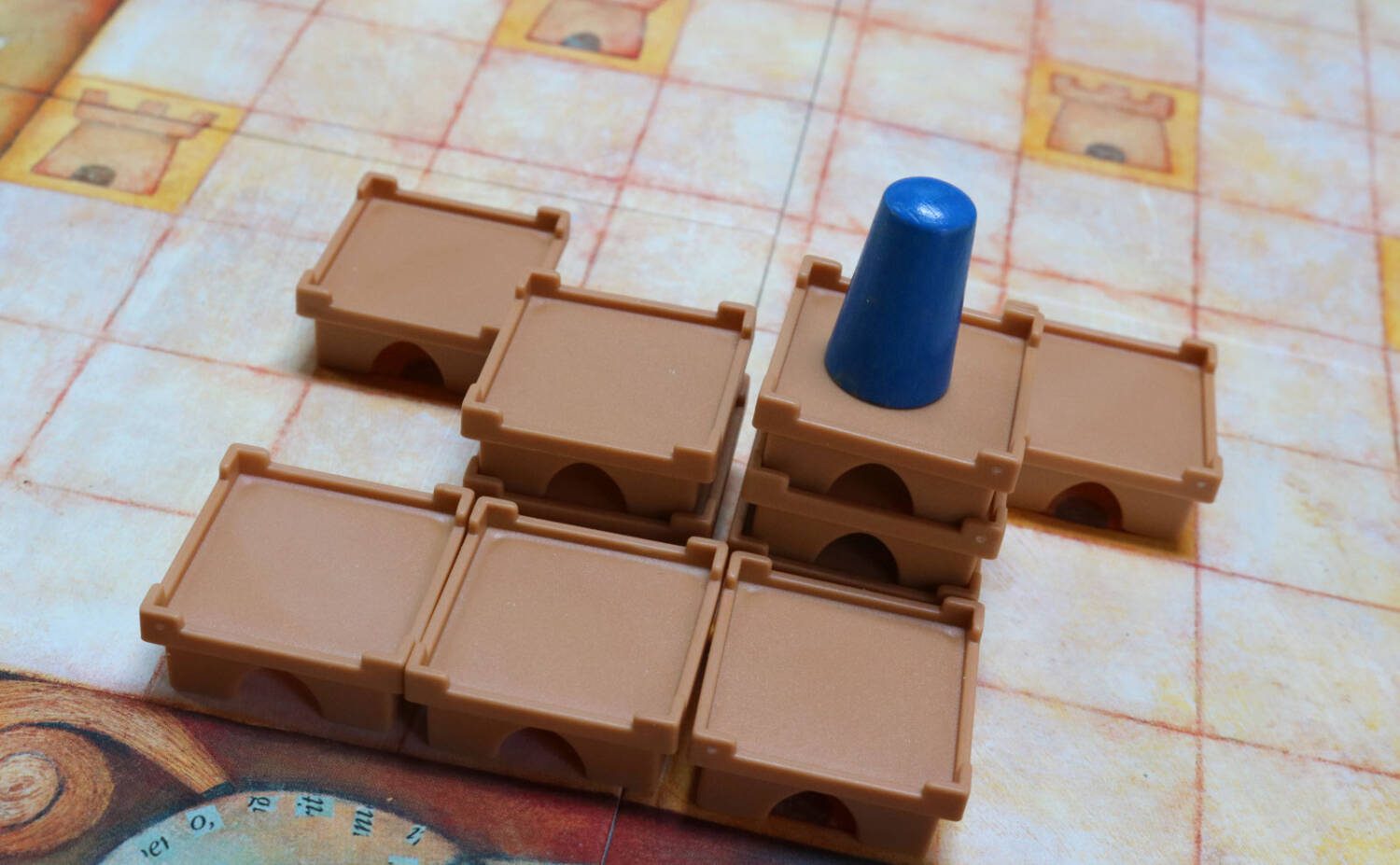
Of course, building castles comes with some restrictions. While castle pieces can be diagonally adjacent, they can never be orthogonally adjacent. This would connect, or combine, two castles, which is not allowed. Also, the size of the base of your castle determines how high you can build it. If you have only built your castle base out to three spaces on the board, you can’t build any higher than the third level.
Thing Two
Thing Two is to expand and invade. You won’t win Torres by only building and scoring your starting castle. You will need to bring some of your extra Knights onto the board and move them onto nearby empty castle pieces to start a new castle. Another option is to bring an extra Knight onto the board and have them move into another castle. Turns out these castles lack defenses and the Knights are all pacifists. You can move a Knight into one of their castles (and they can do the same to you) and at least partially share in the scoring.
You can spend action points to move a Knight from the board to the first level of an opponent’s castle—one that an opponent has been building up.
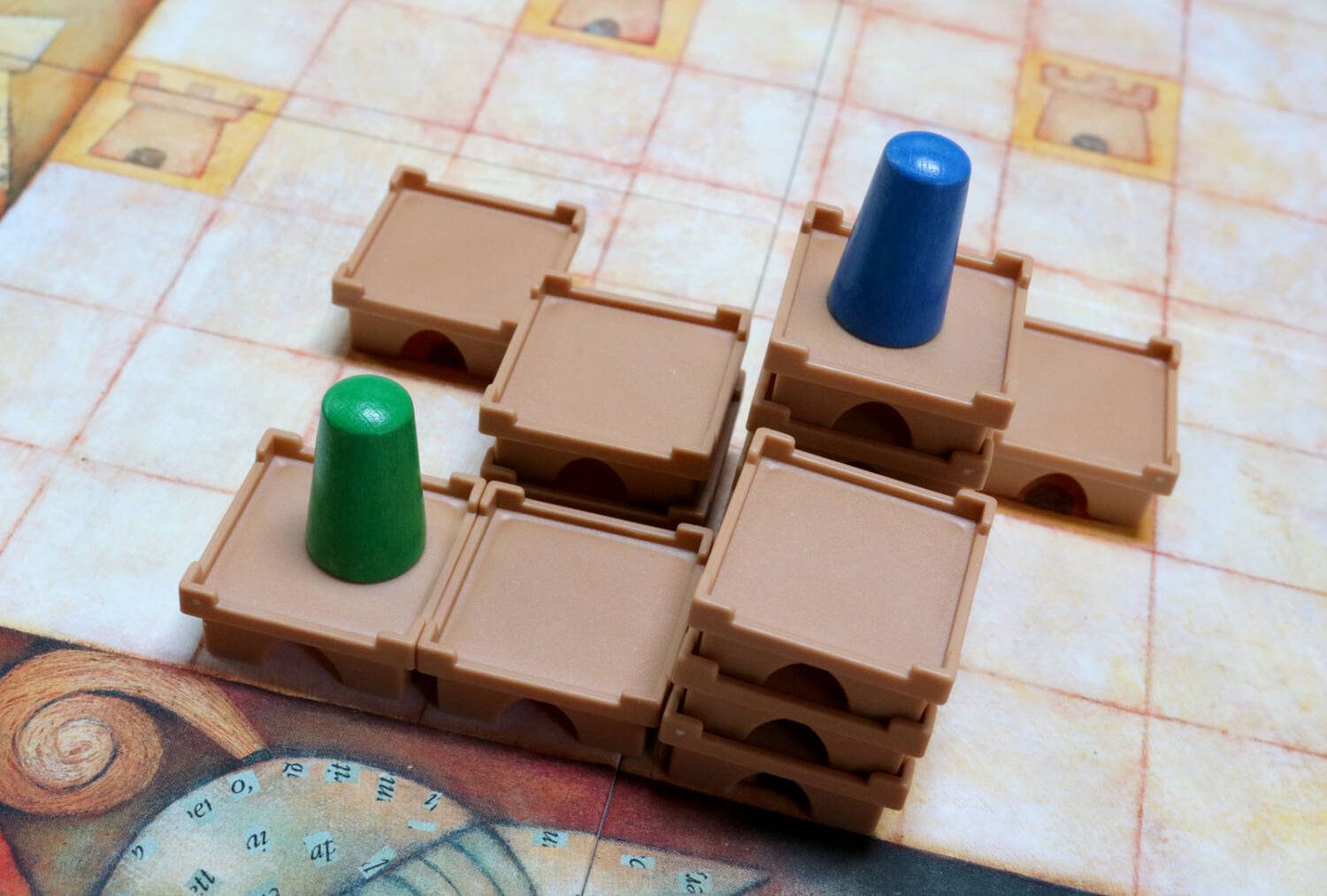
This is because, along with moving one space orthogonally across the board, Knights can also move up one level per action point. (Say, from the board to the first level of a castle; from the second level of a castle to the third, etc.) I’ll note here that you can add castle pieces to not only the castle(s) you started building, but any castle on the board. This comes in handy when you’ve invaded an opponent’s castle and want to climb up a level or two to increase your score for that castle.
His Majesty, The King
One castle you’ll definitely want to build on to and invade is the one where the King resides. If, at the end of the first round, you have a Knight in the King’s castle and you’re both on the same level, in addition to the standard scoring of the castle, you also score an extra 5 points.
After all first round scoring is done, the player in last place can choose to move the King to another castle on any available level. At the end of the second round, if you’re on the same level as the King in that castle, you’ll score an additional 10 points. At the end of the third round, it’s an extra 15.
For the last place player, strategically moving and placing the King is an important way to come back from behind. If you can deny your opponents the ability to be in the same castle and on the same level as the King, you’ll be the sole winner of those nice bonus points.
Thoughts
Action cards aside, Torres is an abstract game, which may be why it appeals to me so much. Each of the three rounds starts with players receiving the same number of castle pieces and getting five action points per turn. The question becomes, what will everyone around the table do with those pieces and their action points?
Action cards considered, although they aren’t essential, they add a rule-breaking element that I enjoy. (Unlike the god cards in Santorini, which I leave out whenever I play.) In my last game, we each played a card in the final round at just the right moment. Each one created an unexpected, point-scoring move—the kind where you just nod your head in appreciation of a really good move (and then wait to make your own, equally unexpected and good move).
For those who may be concerned there’s a big math aspect to Torres that might seem off-putting, rest assured, the math is limited to the lower end of the standard times tables and addition. The board also comes with a score tracker along the edge, making end of round scoring easy.
Torres is an easy game to teach and plays fairly quickly. The board size and action point options are sufficient to have your games each play out differently, but tight enough to keep players from falling into analysis paralysis. While there isn’t any direct player interaction, you will be paying attention to what your opponents are doing on their turns. Knowing when to build, when to add and move Knights, and when to invade, will require a balance among your five action points. You’ll need to constantly watch your opponents’ actions to make the best moves on your turn.
There’s something very satisfying about building up your own castle, as well as invading an opponent’s castle to seize some necessary extra points. It’s less so when they come crawling into your carefully constructed castle, of course. But that’s life, isn’t it?


